Recently, " Can Tho rich lady" Ngan "Collagen" made waves online when she posted a close-up clip of what she called a "housewarming gift from LV", which was a green cake with a handwritten card - a gesture considered a sign of utmost respect from luxury brands.
The video immediately created a storm on social media, but not quite in the way its owner expected. The online community quickly divided into two opposing opinions: on one side were words of admiration, marveling at the privileges of a VIP customer; on the other side was an army of skeptical "detectives", dissecting every little detail. They pointed out that the handwriting on the card was somewhat "scribbled", lacking the usual formality.
More importantly, the content was written entirely in Vietnamese - something that is considered unusual for a French brand's global communication process from its Singapore branch. A series of images of "standard" cards received by international stars or long-time customers were brought up for comparison, raising the big question: Is that card a true proof of her "VIP" status at Louis Vuitton?
Beyond the personal, the debate has inadvertently opened the door to a fascinating and secretive world : the art of elite customer service in the luxury industry. It forces us to ask: What is the value of a handwritten card from one of these empires? And why, in a world dominated by AI and automation, does ink on paper have such formidable power?
When handwriting is a luxury
The revival of handwriting is not a romantic nostalgia, but a very smart business strategy. In a world where everyone’s email inbox is flooded with automated promotional emails, a physical card, carefully placed in a luxurious envelope, is a “strange phenomenon”. It cannot be erased with the click of a mouse. It can be held, felt, and most importantly, it makes the recipient feel truly special.
According to an analysis by branding expert Marilisa Barbieri in Entrepreneur magazine, “time is the ultimate definition of luxury.” When a customer is willing to spend tens or even hundreds of thousands of dollars on a handbag or a piece of jewelry, what they are buying is not just a product. They are buying an experience, a feeling of belonging to another level.
Having a Sales Associate (SA) take the time to personally write a personalized note is an integral part of that luxury experience. It sends the message: "We don't just care about your transaction, we care about you."
In an article on PenLetters, the power of a handwritten card is described as a “multisensory experience.” Customers can feel the quality of the paper (tactile), see the delicate ink (visual), and feel the sincerity behind each letter. This is something that no email or automated message can replicate. In an impersonal digital world, handwriting has become a true luxury.
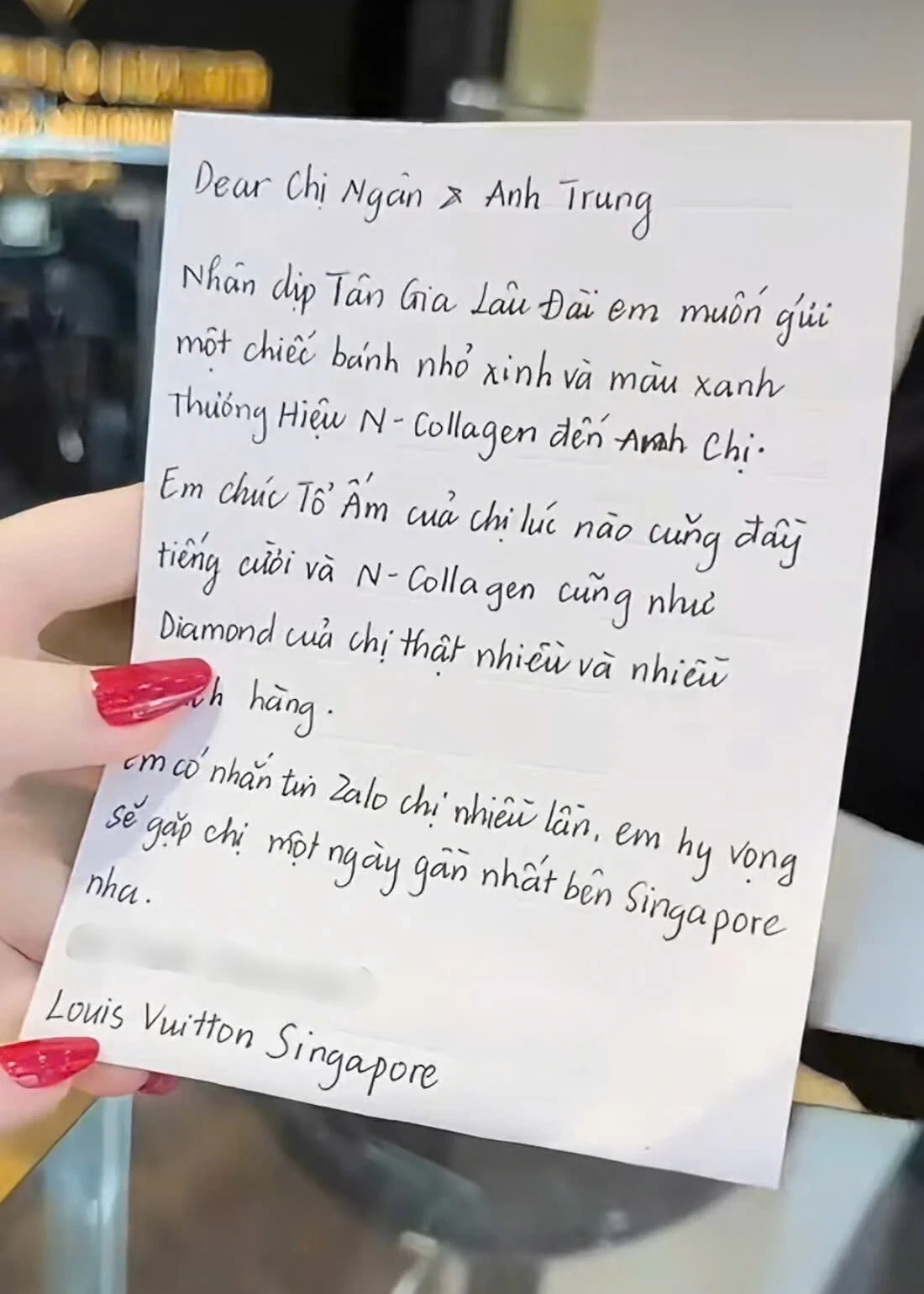
LV's handwritten letter to Ngan Collagen is causing a stir on social networks (Photo: Screenshot).
Handwriting as customer portrait
These cards are never sent randomly. Behind them lies a high-level Customer Relationship Management (CRM) strategy, where each stroke is a stroke that completes the portrait of the VIP customer.
The world's top brands have turned this into an art:
Louis Vuitton: Often sends handwritten thank you notes to customers who purchase iconic products like Capucines bags, exotic crocodile items, or custom-made orders.
Chanel: Famous for handwritten invitations to exclusive collection previews. Receiving one is not just an invitation, but also a recognition of status within the brand's inner circle.
Cartier and Tiffany & Co.: Often include elaborate calligraphy cards with their expensive jewelry. This not only elevates the unboxing experience, but also creates an “Instagrammable moment” that encourages customers to share their joy on social media, turning them into natural brand ambassadors.
This art is called “clienteling” – a term that originated in luxury retail and refers to building and nurturing one-on-one relationships with customers. Top SAs are more than just salespeople, they are trusted advisors.
They remember their guests’ birthdays, wedding anniversaries, color preferences, even pet names. Sophisticated CRM systems automatically remind them of these special occasions, but it’s the hands and minds of SA that turn that dry data into a warm and heartfelt message.
A card, a loyalty contract
Do these seemingly “old-fashioned” efforts really work in the age of data and analytics? The answer is a resounding yes. Studies have shown the powerful psychological impact of personalized gestures.
A recent report found that customers who receive handwritten thank you notes are significantly more likely to be loyal and return to shop with us. The reason is simple: it creates an emotional connection. In a world where customer loyalty is increasingly fragile, emotional connections are the strongest glue. A handwritten note says, “You are not a number on our sales sheet, you are an individual we value.”
The difference with email marketing is huge. While many promotional emails are considered spam, a handwritten card is almost always opened and read. It stays on a desk, on a bookshelf, becoming a tangible memento of the customer’s relationship with the brand.
In this age of “emotional industrialization,” when everything can be automated, taking the time to do something by hand is a powerful statement of sincerity. It’s not just a card, it’s a “loyalty contract” signed with emotion.

Under pressure from digitization and automation, luxury brands are returning to one of the oldest but most powerful forms of communication: handwritten greeting cards (Illustration: Rad Mora).
However, not everyone who walks into a Louis Vuitton store will receive a handwritten card. This is a privilege reserved for those the brand really wants to retain for the long term. So, who are the real VIPs?
This selection process is a complex matrix, based on many factors:
Purchase History: This is the most basic factor. Total value and average value per transaction are the numbers that speak for themselves.
Frequency: A person who makes regular purchases, even if the value of each purchase is not very high, is sometimes valued higher than a person who makes a one-time purchase with a large value.
Special Deals: Purchasing products from limited collections, bespoke products, or participating in brand auction events are clear signs of a high-end customer.
Personal relationship with the SA: This is the deciding factor. An SA can “nominate” their clients to the VIP list if they see potential and long-term commitment.
A card can be sent for many reasons: to celebrate a birthday, to congratulate a significant event in a customer's life (like a housewarming), to thank them after a major transaction, or simply as an invitation to a private salon to see new arrivals that are not yet on display.
As one former luxury store manager once shared (on condition of anonymity): “The card is only for people we see a future with the brand. It’s an investment in the relationship, not a mass marketing move.”
Media effect or classy reality?
Returning to Ngân Collagen’s story, after understanding the strategic process behind a handwritten card, from font selection to personalization of the message, we have the right to ask critical questions. Was the card really sent from Louis Vuitton Singapore’s official CRM system? Was it accompanied by a recent invoice worth tens of thousands of dollars? Or was it simply a private gift from a sales person - a close “client advisor”?
Whatever the answer, the incident has exposed an interesting aspect of how the luxury industry operates under the glare of social media: the symbolic power of personalized experiences. A small, carefully handwritten card can become a status symbol, creating a huge media impact and subtly suggesting a privileged customer in the public eye. But the card, however powerful, does not say it all.
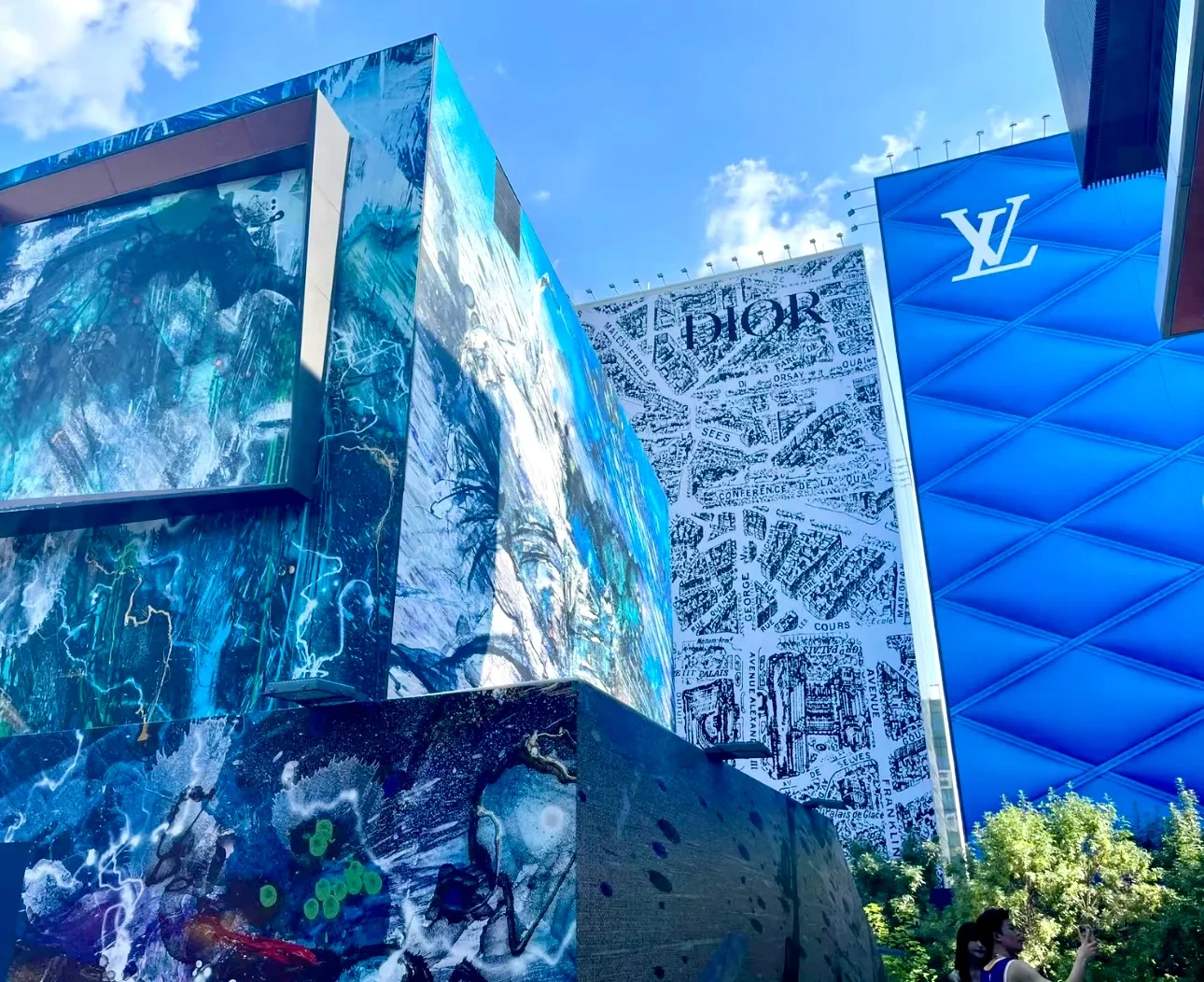
Luxury brands are always looking for new ways to express their uniqueness and superiority. In recent years, they have begun to focus on the art of handwriting greeting cards as a way to build deeper relationships with customers (Photo: Xiaohongshu).
In fact, true VIPs, who fall into the VVIC (Very Very Important Client) category, often receive even more discreet and expensive privileges: behind-the-scenes tours of the French atelier, private dinners with the creative director, or the chance to own never-before-seen designs. For them, showing off a handwritten card is probably… unnecessary.
The story of anyone being able to handwrite and show off cards is therefore also a reminder for luxury brands themselves: are they gradually losing control of their most sophisticated emotional tools? When anyone can “borrow experiences to pretend” on social media, the line between real class and performance effects becomes more fragile than ever. And that is the biggest challenge that luxury empires face in the race to retain the super-rich in an age where the media shapes every feeling.
Source: https://dantri.com.vn/kinh-doanh/tu-vu-ngan-collagen-khoe-thiep-louis-vuitton-lo-cach-hang-xa-xi-cham-vip-20250730114125820.htm













































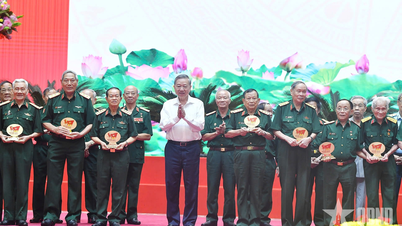



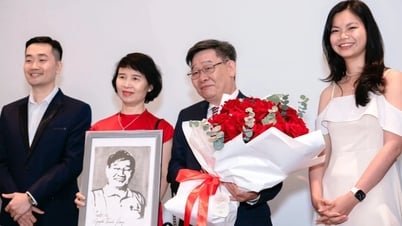

























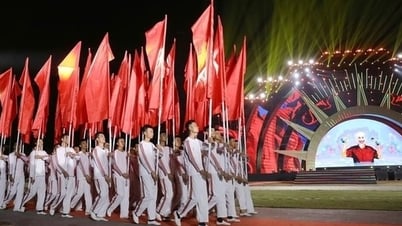























Comment (0)